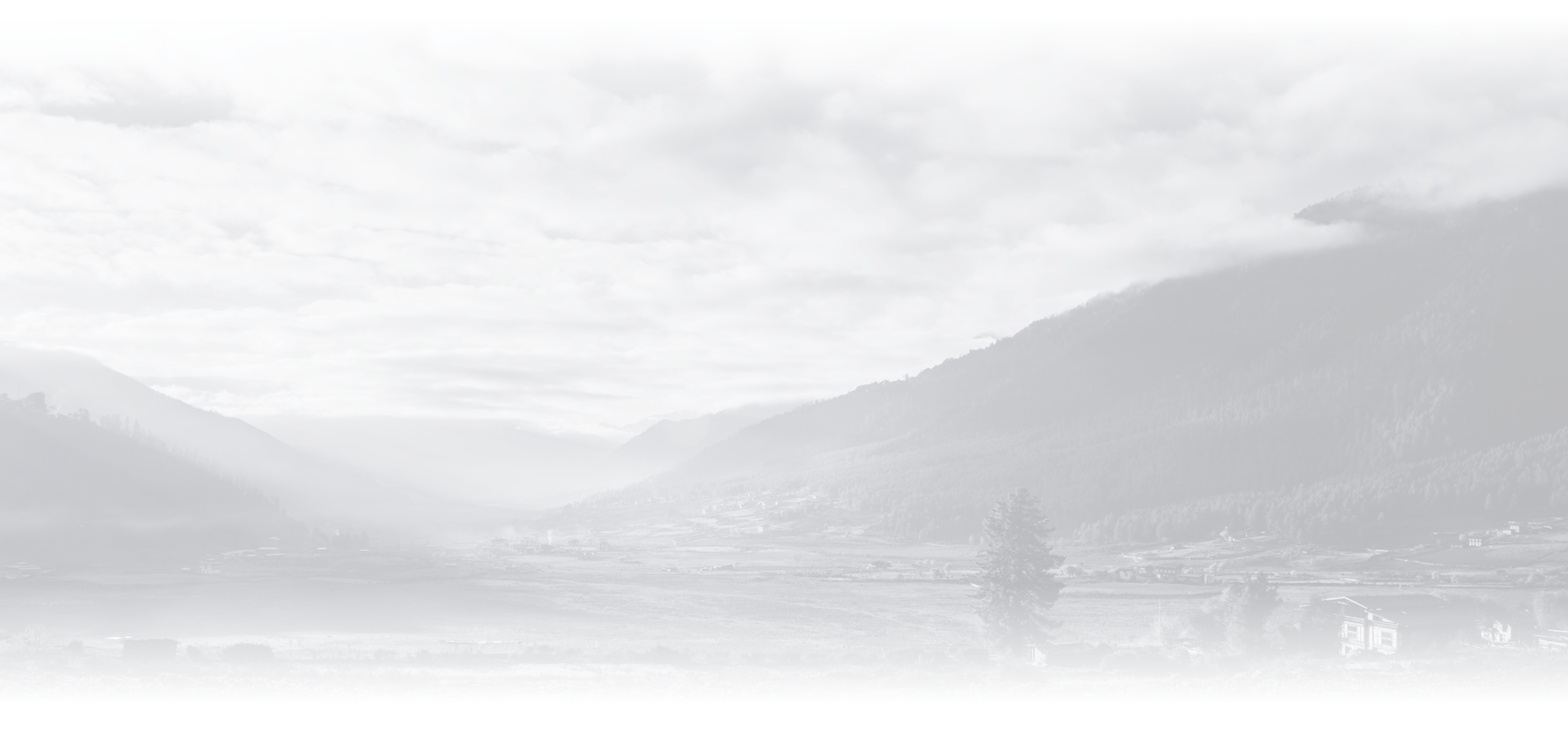
Unveil the Wonders of Bhutan
Bhutan’s largest travel catalog
With its thick buttressed walls and fine woodwork, Rinpung Dzong offers an excellent example of traditional Bhutanese architecture - befitting the seat of legislative and religious authority in one of Bhutan's wealthiest regions.

Bhutan's earliest known name, Lho Mon, translates to Southern Land of Darkness. If you look at an ancient map of Asia, you may find that the corners end abruptly where Bhutan begins and that the remaining area is illustrated with dragons and mythical beings. This is how you can imagine Bhutan. Socially, spiritually and geographically, the Dragon People and our place that surround us have remained shrouded in mystery for the duration of time.
And with that, Bhutan is not a place that is ordinarily traveled. It is not meant to be, either. You do not find Bhutan.Bhutan is a place that finds you.


On 17 December 1907, religious and secular leaders from across Bhutan gathered in Punakha to unanimously elect Ugyen Wangchuck as the First Druk Gyalpo, or "Precious Ruler of the Dragon People" - Bhutan's first king. The date of his coronation has been celebrated ever since as Bhutan's National Day. Each year, His Majesty appears for an inspiring speech to the nation. The location for this address varies annually, and the place does not become known until mere days beforehand.

By the time the Paro Tsechu starts on the 10th day of the second lunar month, the monks have spent sixty days in prayer and practice. Sleeping only a few hours each night during this time, they meticulously run through dance steps handed down by saints, designed to invoke deities. The first day's masked nang-chham are held in the courtyard inside Rinpung Dzong, but the subsequent days' festivities are now held in an open space outside the dzong, to better accommodate the numbers that wish to attend.


Every year on November 11, the Black Necked Crane Festival launches into a whirlwind of celebration. In the courtyard of Gangtey Goempa, on a ridge in the middle of Phobjikha Valley, the festival celebrates the arrival of the black necked cranes.

Come summer, when rare white poppies bloom in the hills of western Bhutan, the sleepy town of Haa awakens for the Haa Summer Festival (also called the Alpine Summer Festival). Held on the first or second weekend in July, the festival is a recent addition to Bhutan's busy calendar of regional festivals. Attractions include traditional sports competitions, from khuru (darts) to wrestling, masked chham dances, and displays of wildflowers.

Early each spring, when the winter snows still cover peaks elsewhere in Bhutan, the subtropical Punakha Valley basks in its customary warmth. With six straight days of festivities falling in the second lunar month, the intensity of the Punakha Drupchen gives way immediately to the more celebratory three-day Punakha Tsechu. Punakha Tsechu was established in 2005 to help preserve Buddhist teachings and to celebrate the deeds of Bhutan's great unifier and leader, Zhabdrung Ngawang Namgyal.

Early every spring, between the 8th and 10th days of the second lunar month, well-dressed crowds from across eastern Bhutan and as far afield as Tawang in India descend on Gom Kora (also known as Gomphu Kora) for the ancient temple's annual tsechu. During the festival, a ceaseless stream of worshippers walk kora (ritual clockwise circuits) around Gom Kora lhakhang and the black boulder behind it in a vigil lasting into the night. Locals believe this to be an optimal time for meeting future life partners; many young people circumambulate the monastery late at night, singing prayers and looking for potential wives or husbands.

Every year just before the Thimphu Tsechu, the courtyard of Thimphu's Tashichho Dzong comes alive for a day of sacred dances honoring Bhutan's fierce protector deity, Palden Lhamo. The dances performed by masked monks reenact a vision that appeared to Kuenga Gyeltshen, the reincarnation of Zhabdrung Nawang Namgyel's son, of the deity dancing in front of him while he was deep in meditation. Kuenga Gyeltshen established the Thimphu Drupchen (also known as the Thimphu Dromchoe) in 1710, and the whirling dances have been performed on the seventh day of the eighth month of the Bhutanese calendar in an unbroken line ever since.


The three-day Ura Yakchoe is one of Bumthang's most colorful festivals. Officially scheduled to start on the 12th day of the third lunar month — which usually falls in May — in practice, the festival date is only set a few weeks in advance. Be prepared for last minute adjustments when planning to visit this tsechu!

Punakha Tsechu was established in 2005 to help preserve Buddhist teachings and to celebrate the deeds of Bhutan's great unifier and leader, Zhabdrung Ngawang Namgyal. The tsechu features masked chham dances and folk dances. Visitors trek down from the highlands to Punakha from as far away as Gasa and Laya to join the tsechu, which for many is the main highlight of a long, cold winter.